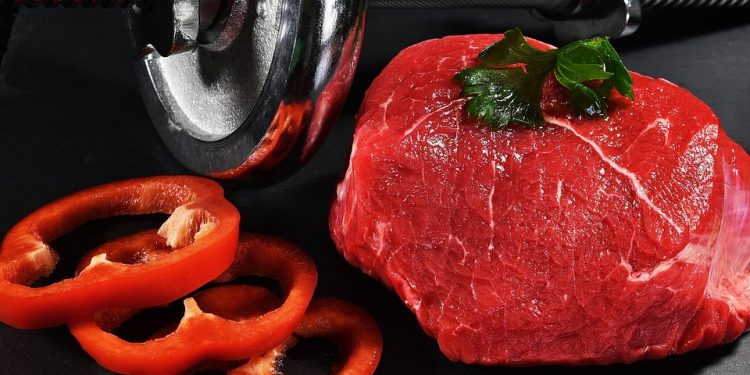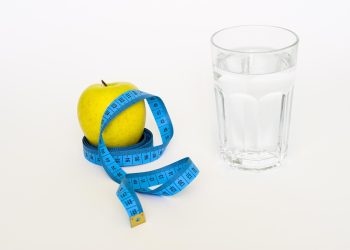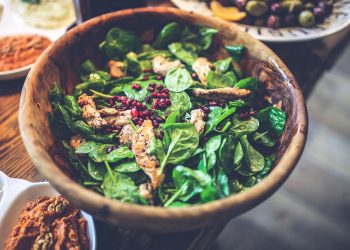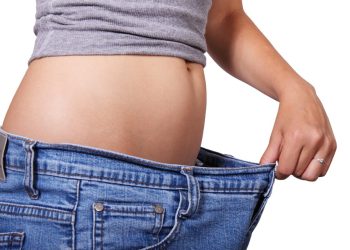Understanding the Nuances: Fat Loss vs. Weight Loss
The terms “weight loss” and “fat loss” are often used interchangeably, but they represent fundamentally different processes with distinct implications for your health and body composition. While both involve a decrease in the number you see on the scale, understanding the difference is crucial for setting realistic goals and achieving sustainable results. In this article, we’ll delve into the core distinctions between weight loss and fat loss, exploring their impact on your body and offering guidance on how to prioritize the latter for optimal well-being.
What is Weight Loss? A Simple Definition
Weight loss, in its simplest form, is a reduction in your overall body mass. This number encompasses everything that makes up your total weight, including:
- Fat mass: The amount of stored energy in your body.
- Muscle mass: The weight of your muscles.
- Water weight: The amount of water retained in your body.
- Bone mass: The weight of your bones.
- Organ weight: The weight of your internal organs.
- Even the weight of undigested food in your digestive system!
When you step on a scale and see a lower number, you’ve experienced weight loss. However, this doesn’t necessarily tell you *what* you’ve lost. A crash diet, for example, might lead to rapid weight loss, but a significant portion of that loss could be water and muscle, not fat.
What is Fat Loss? Targeting Stored Energy
Fat loss, on the other hand, is the specific reduction of adipose tissue, or body fat. Adipose tissue serves as the body’s primary energy reserve and plays a role in hormone production and insulation. Excess body fat is associated with a higher risk of various health problems, including heart disease, type 2 diabetes, and certain cancers.
Therefore, fat loss is generally considered the more desirable goal. It focuses on improving body composition – the ratio of fat mass to lean mass (muscle, bone, and water) – which has a more significant impact on overall health and appearance.
Why Fat Loss Matters More Than Weight Loss
While seeing a lower number on the scale can be initially motivating, prioritizing fat loss over simply “losing weight” offers several crucial advantages:
- Improved Health Markers: Reducing body fat lowers your risk of developing chronic diseases associated with excess fat storage.
- Increased Metabolism: Maintaining or increasing muscle mass during fat loss boosts your resting metabolic rate, meaning you burn more calories even when you’re at rest. Muscle is metabolically active tissue, requiring more energy to maintain than fat.
- Enhanced Body Composition: Fat loss leads to a leaner, more toned physique. This often translates to feeling better in your clothes and having more confidence.
- Sustainable Results: Strategies focused on fat loss, such as healthy eating and regular exercise, are more sustainable in the long run than drastic diets that primarily lead to water and muscle loss.
- Better Energy Levels: Losing excess fat can improve insulin sensitivity, leading to more stable blood sugar levels and sustained energy throughout the day.
The Downside of Weight Loss Without Fat Loss Focus
Imagine losing weight rapidly through extreme calorie restriction. While the scale might show impressive results initially, consider what’s happening beneath the surface:
- Muscle Loss: Without adequate protein intake and resistance training, your body may break down muscle tissue for energy, leading to a decrease in muscle mass.
- Decreased Metabolism: Muscle loss lowers your metabolism, making it harder to lose weight in the future and increasing the likelihood of weight regain.
- Water Loss: A significant portion of the initial weight loss might be water, which is quickly regained once you resume normal eating habits.
- Nutrient Deficiencies: Restrictive diets can lead to nutrient deficiencies, impacting your overall health and well-being.
- The “Yo-Yo” Effect: Rapid weight loss followed by weight regain (the yo-yo effect) can be detrimental to your health and can make future weight loss efforts more challenging.
How to Prioritize Fat Loss Over Weight Loss
The key to achieving sustainable fat loss lies in adopting a holistic approach that combines healthy eating habits, regular exercise, and a focus on preserving muscle mass. Here’s a breakdown of effective strategies:
1. Calorie Deficit: A Controlled Approach
To lose fat, you need to consume fewer calories than you burn. This creates a calorie deficit, forcing your body to tap into its stored fat reserves for energy. However, avoid drastic calorie restriction. A moderate deficit of 300-500 calories per day is generally recommended for sustainable fat loss.
Example: If your Total Daily Energy Expenditure (TDEE) is 2000 calories, aim to consume 1500-1700 calories per day.
2. Prioritize Protein Intake
Protein is crucial for preserving muscle mass during calorie restriction. Aim for 0.8-1 gram of protein per pound of body weight (or 1.6-2.2 grams per kilogram) per day. Protein also has a higher thermic effect than carbohydrates and fats, meaning your body burns more calories digesting it.
Good protein sources include: Lean meats, poultry, fish, eggs, dairy products, beans, lentils, tofu, and protein powder.
3. Embrace Resistance Training
Resistance training, such as weightlifting or bodyweight exercises, is essential for building and maintaining muscle mass. Muscle helps boost your metabolism and improves your body composition. Aim for at least 2-3 resistance training sessions per week, targeting all major muscle groups.
Example exercises: Squats, lunges, push-ups, rows, overhead press, deadlifts.
4. Incorporate Cardiovascular Exercise
Cardio exercise, such as running, cycling, or swimming, helps you burn calories and improve your cardiovascular health. Aim for at least 150 minutes of moderate-intensity cardio or 75 minutes of vigorous-intensity cardio per week.
Example: Brisk walking for 30 minutes, five days a week.
5. Focus on Whole, Unprocessed Foods
Base your diet on whole, unprocessed foods, such as fruits, vegetables, lean proteins, and whole grains. These foods are nutrient-dense and provide sustained energy, helping you stay full and satisfied. Limit your intake of processed foods, sugary drinks, and unhealthy fats, which are often high in calories and low in nutrients.
6. Get Enough Sleep
Adequate sleep is crucial for regulating hormones that control appetite and metabolism. Aim for 7-9 hours of quality sleep per night. Sleep deprivation can increase levels of the hunger hormone ghrelin and decrease levels of the satiety hormone leptin, leading to increased cravings and overeating.
7. Manage Stress
Chronic stress can lead to elevated levels of cortisol, a stress hormone that can promote fat storage, particularly in the abdominal area. Practice stress-management techniques such as meditation, yoga, or spending time in nature.
8. Stay Hydrated
Drinking plenty of water can help you feel full, boost your metabolism, and improve your overall health. Aim for at least 8 glasses of water per day.
9. Track Your Progress Beyond the Scale
While the scale can provide some information, it’s important to track your progress in other ways as well. Consider measuring your body circumference (waist, hips, thighs), taking progress photos, and tracking your body fat percentage using a body fat caliper or bioelectrical impedance analysis (BIA) scale.
The Importance of Body Composition Analysis
Tools and techniques that measure body composition are useful in distinguishing fat loss from overall weight loss. These methods offer a more detailed look at your body than just a scale reading:
- DEXA Scan (Dual-energy X-ray absorptiometry): Considered the gold standard, a DEXA scan provides a precise measurement of bone density, lean muscle mass, and fat mass.
- Bioelectrical Impedance Analysis (BIA): BIA scales estimate body composition by sending a weak electrical current through your body. While convenient, their accuracy can be affected by hydration levels.
- Skinfold Calipers: A trained professional uses calipers to measure the thickness of skinfolds at specific sites on your body to estimate body fat percentage.
- Hydrostatic Weighing (Underwater Weighing): This method involves being submerged in water to measure body density and estimate body fat percentage.
Conclusion: Embrace a Sustainable Approach to Fat Loss
While weight loss might seem like a simple goal, focusing on fat loss offers a more comprehensive and sustainable approach to improving your health, body composition, and overall well-being. By prioritizing healthy eating habits, regular exercise (including resistance training), adequate sleep, and stress management, you can achieve lasting results and enjoy the numerous benefits of a leaner, healthier body. Remember that sustainable fat loss is a journey, not a race. Be patient with yourself, stay consistent with your efforts, and celebrate your progress along the way.
Frequently Asked Questions (FAQs)
Here are some frequently asked questions about fat loss versus weight loss:
Q: Is it possible to lose fat and not see a change on the scale?
A: Yes, it is possible. This can happen if you’re building muscle while losing fat. Muscle is denser than fat, so you might be losing fat and gaining muscle at the same rate, resulting in little to no change on the scale. This is often referred to as body recomposition and is considered a positive outcome.
Q: How long does it take to see noticeable fat loss results?
A: The rate of fat loss varies depending on individual factors such as metabolism, genetics, and adherence to diet and exercise plans. Generally, a healthy rate of fat loss is 1-2 pounds per week. You may start to see noticeable results in a few weeks or months, depending on your starting point and consistency.
Q: Can I target fat loss in specific areas of my body?
A: Unfortunately, spot reduction – the idea that you can lose fat in specific areas of your body by targeting those areas with exercise – is a myth. You can’t choose where your body loses fat. Fat loss occurs throughout your body, and genetics play a significant role in where you tend to store fat.
Q: What are some common mistakes people make when trying to lose fat?
A: Some common mistakes include:
- Drastic calorie restriction
- Not eating enough protein
- Neglecting resistance training
- Focusing solely on cardio
- Not getting enough sleep
- Not managing stress
- Being inconsistent with their efforts
Q: What is the best diet for fat loss?
A: There is no single “best” diet for fat loss, as individual needs and preferences vary. However, a diet that is based on whole, unprocessed foods, is high in protein, moderate in carbohydrates, and healthy fats, and creates a moderate calorie deficit is generally effective. It’s also important to find a diet that you can sustain long-term.
Q: Should I use supplements to help with fat loss?
A: While some supplements may have a slight impact on fat loss, they should not be considered a magic bullet. Focus on building a solid foundation with a healthy diet and regular exercise before considering supplements. Some supplements that may be helpful (but require further research) include caffeine, green tea extract, and protein powder. Always consult with a healthcare professional before taking any supplements.
Q: How do I stay motivated during my fat loss journey?
A: Staying motivated can be challenging, but here are some tips:
- Set realistic goals
- Track your progress and celebrate your achievements
- Find a workout buddy or join a fitness community
- Focus on the non-scale benefits of fat loss, such as improved energy levels and mood
- Be patient and persistent
- Don’t be afraid to adjust your plan if needed












